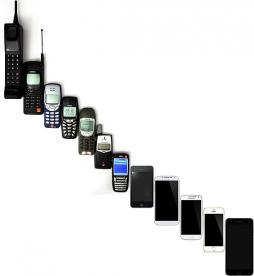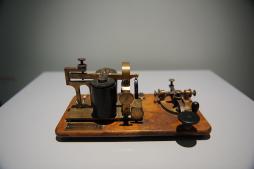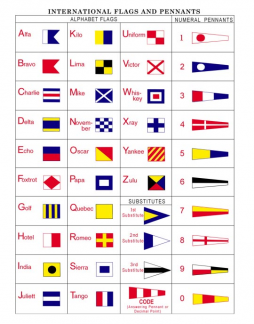Patterns to Transfer Information
Clarification Statement: Examples of solutions could include drums sending coded information through sound waves, using a grid of 1s and 0s representing black and white to send information about a picture, and using Morse code to send text.
For information about how hula is used to communicate and tell stories, check out the
Traditional Ways of Knowing: Communcating through Hula.
Patterns in Waves
Waves are repeating patterns of motion that transfer energy from place to place—without overall displacement of matter. Waves of water, light and sound transfer energy. And, all waves have the same basic features in common. By understanding wave properties, scientists and engineers can design systems for storing information and for transferring information across long distances.
Because waves transfer energy without the bulk motion of matter:
- waves travel unchanged over long distances,
- waves pass through other waves undisturbed, and
- waves can be detected and decoded far from where they were produced.
Fig. 1. The patterns visible in these audio waves are transferring information to a recieving end.
Image courtesy of Wikimedia Commons
This makes waves useful for sending and receiving messages. For example, sound waves are a common form of communication. Sound waves are pressure waves that move through air, water, or other material. The human ear and brain working together are very good at detecting and decoding patterns of information in sound (e.g., speech and music) and distinguishing them from random noise.
Simple waves have repeating patterns of wavelength, frequency, and amplitude. Waves of the same type can be combined to produce complex patterns useful for storing and decoding information (Fig. 1, click to see graphic). For example, information can be shared by digitizing, and then sending the information over long distances as a series of wave pulses, where it can be reliably stored in computer memory.
Fig 2. Phones have changed a lot over time as the technology to send and recieve signals has improved.
Image courtesy of Wikimedia Commons
History of Digital Communication
Today, phones and computers make it easy to send messages from one person to another, but that wasnК»t always the case (Fig. 2). Before electricity, people used different modes of communication, like written letters, to send information across long distances, which might take weeks or more to be recieved after traveling by boat, horseback, and foot! Once electricity came onto the scene, people began experimenting with electrical communcation as early as 1726!
Fig. 3. This telegraph key and sounder, patented in 1901, was a more advanced version of the one designed by Samual Morse in 1844.
Image courtesy of ICT Discovery, Flickr
Although many early attempts to send distant signals were unsucessful, persistence paid off, and the first working telegraph was built in 1816. Over the years, people continued to improve this method of communication (Fig. 2) and eventually, a language using electronic patterns, called Morse code, was developed.
Morse Code
Fig. 4. The letters of the alphabet and numbers have been assigned a pattern of dits and dahs in Morse code.
Image courtesy of Wikimedia
On May 24th, 1844, Samuel F.B. Morse trasmitted the first message using Morse Code. This code was developed using a series of dots, known as dits, and dashes, known as dahs. In Mores code, each letter is formed by a sequence of dots and dashes, allowing full sentences to be spelled out and transmitted. The basic unit of time measurement in Morse code is equal to the dot. A dash is 3x the duration of a dot. A space is expressed with the absence of a signal equal to the duraiton of a dot. Morse code can be transmitted at any speed, or rate (words per minute), since the letters are proportionalty related. The letter "E" has the shortest code because it is the most commonly used letter in English.
Applications of Waves to Transfer Information
Understanding of waves and their interactions with matter has been used to design technologies and instruments. Many scientific instruments, like telescopes, microscopes use waves. There are also many useful applications in the modern world. Light waves, radio waves, microwaves, and infrared waves are used in communications systems. When information is in digitized form, it can be recorded, stored for future recovery, and transmitted over long distances without significant degradation. In digitized systems, information is sent as wave pulses and detected by devices like telescopes, cell phones, wired or wireless computer networks.
Other Patterns to Transfer Information
Fig. 5. These letter and number flags are part of the International Code of Signals.
Image courtesy of Wikimedia
Visual cues are also important for sending messages at a distance—especially in a noisy environment or when there is a need to remain silent. For example, boats use patterns on flags, colors of lights, and flashing of lights to communicate to other boats about their activities, like towing, fishing, country, etc.
There is even an international code for letters and numbers at sea (Figure 5). Each flag corresponds to a specific meaning. The first flag, Alpha, indicates that there is a diver below and boaters should keep clear and use slow speeds.
For a full list of the flags meanings, check out the U.S. Navy Signal Flags site.
There are many ways to communicate beyond the words that we use. Hula is the traditional storytelling dance of the Hawaiian Islands. Check out the Traditional Ways of Knowing special featrure to learn more!
|
The Patterns in Sound Vocabulary
|














